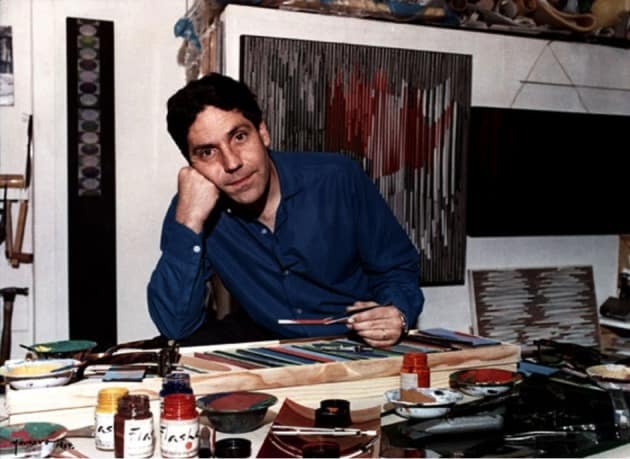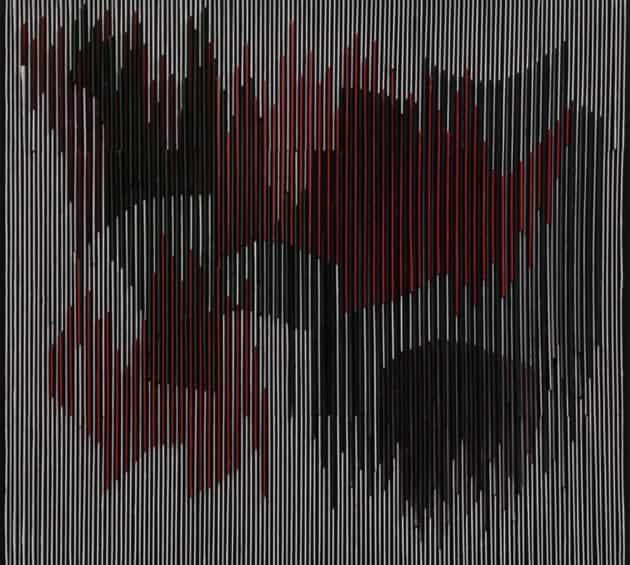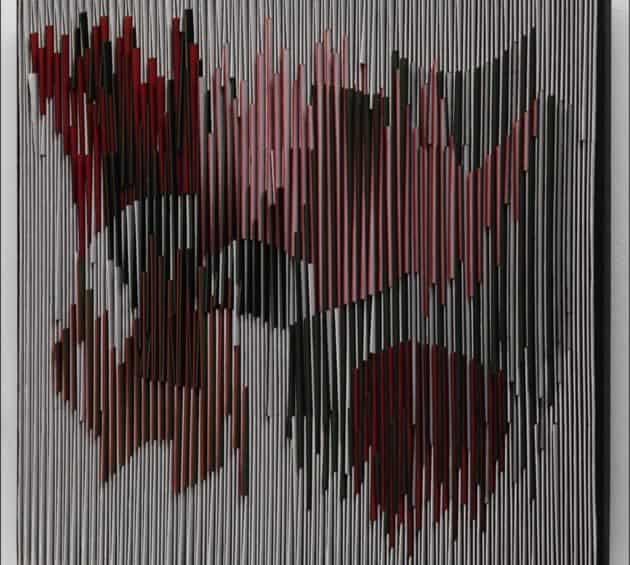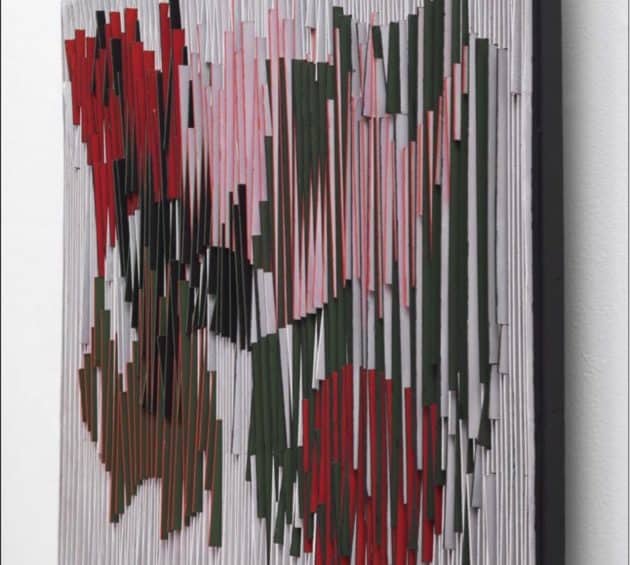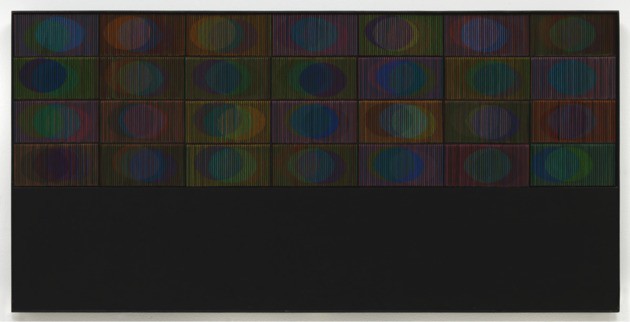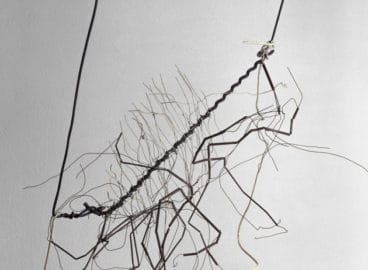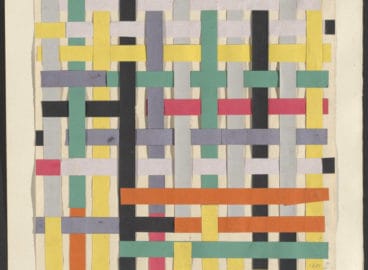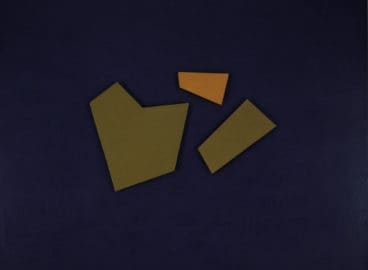Physichromie 21 by Venezuelan artist Carlos Cruz-Diez is another highlight of the Cisneros’ gift to the Museum. Anne Umland, the Blanchette Hooker Rockefeller Curator of Painting and Sculpture, traces this work back to the artist’s studio in Paris in the 1960s and explores the ways Cruz-Diez’s Physichromie series is dependent on active viewer participation and contingencies of lighting.
This text was originally published under the theme “Patricia Phelps de Cisneros Research Institute for the Study of Art from Latin America.” The original content items in this theme can be found here.
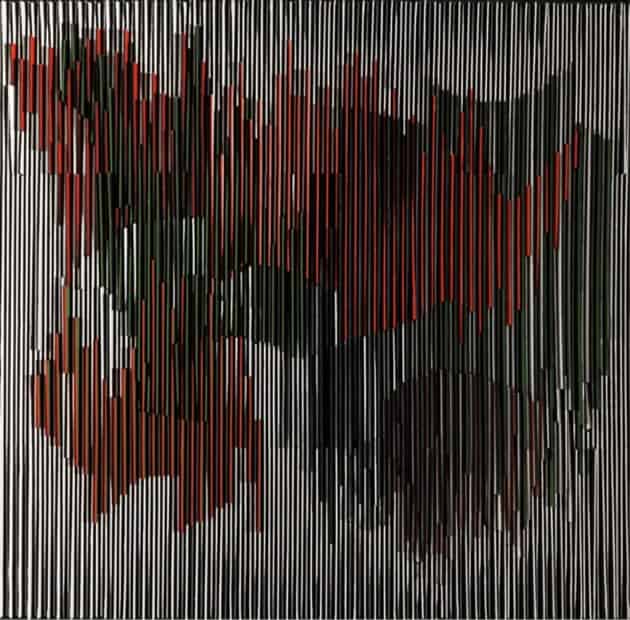
Venezuelan artist Carlos Cruz-Diez (born 1923) is one of the great pioneers of Latin American Op and Kinetic art. His Physichromie 21 is an early masterpiece within an important, ongoing series that Cruz-Diez began in 1959. From 1955 onward, the artist traveled regularly to Paris. The landmark Le Mouvement exhibition held in April 1955 at the Galerie Denise René in Paris—which emphasized Kinetic and participatory art, and included works by Jesús Rafael Soto, Jean Tinguely, and Victor Vasarely, among others—had a strong impact on Cruz-Diez. Five years later, he decided to settle permanently in the French capital. This move enabled him to engage more actively with contemporary developments in avant-garde abstract art, and he went on to play a major role in introducing abstract Venezuelan art into the international scene.
A 1964 photograph of Cruz-Diez in his Paris workshop at 24, rue Pierre Sémard also captures Physichromie 21, which is displayed on the wall behind him. Cruz-Diez is posed as though interrupted while at work. Arrayed on the table in front of him are multiple traces of his process: In the foreground are jars of Flashe, a water-based vinyl paint available in a wide range of bright colors and prized by artists for its velvety-matte finish and highly pigmented opacity. Behind the jars, there is a pair of eyeglasses, perhaps the type needed for closeup work, and over to the right, there is a mat knife, useful for cutting cardboard, as well as another pair of glasses. Bowls filled with paint of various colors are set across the table. Directly in front of Cruz-Diez is what looks like a wood frame, or shallow tray, that is filled with different colored strips of painted cardboard. Cruz-Diez holds a pair of pliers in his left hand, with which he grasps a two-colored strip of cardboard.
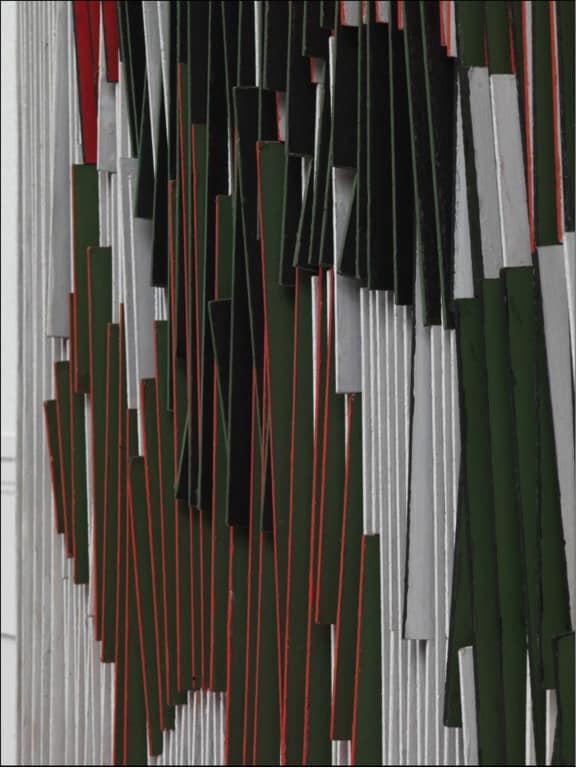
A detail of the richly varied surface of Physichromie 21 provides invaluable insight into this work’s intricate and meticulously constructed dimensionality. Cruz-Diez glued multiple thin strips of painted cardboard at perpendicular angles to a painted plywood support. These cardboard strips have been cut to different lengths, widths, and depths. Some strips, as seen in this image, are uniformly painted white. Others are painted red on one side and green on the other, with the red paint carried over onto the thin, front-facing edge. Cruz-Diez’s use of the complementary colors red and green produces a maximum optical punch and sense of vibration. This perceptual vibration is exacerbated when Physichromie 21 is experienced in person: each shift in viewing angle produces a change in color patterns and composition.
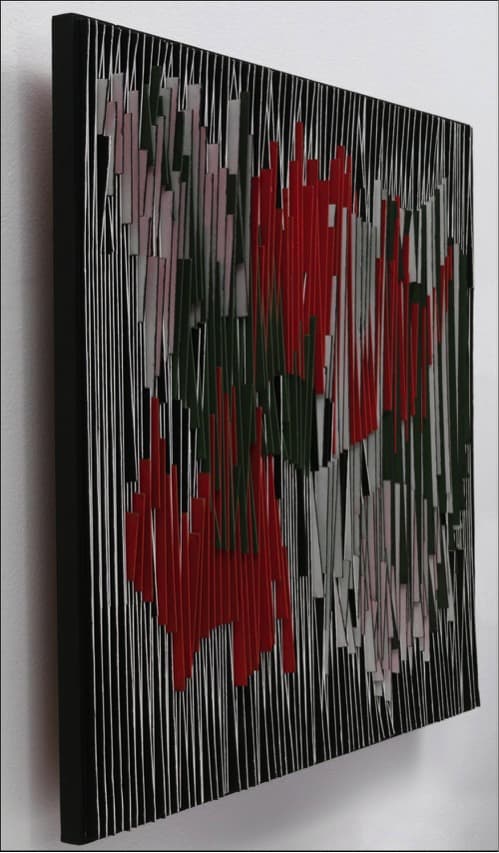
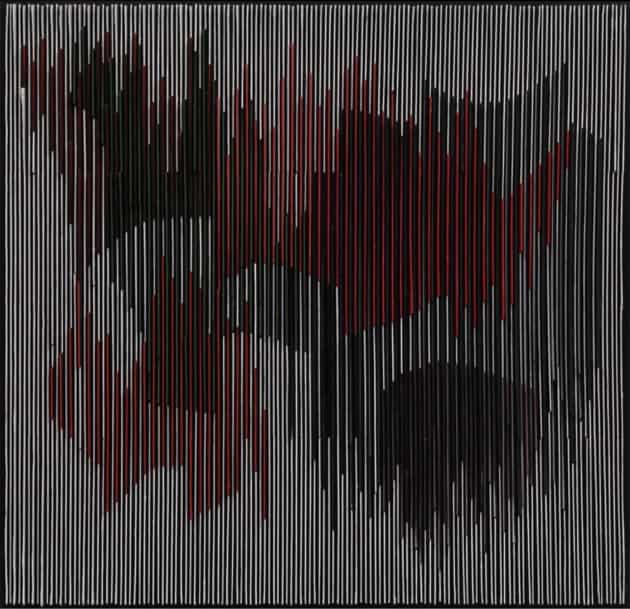
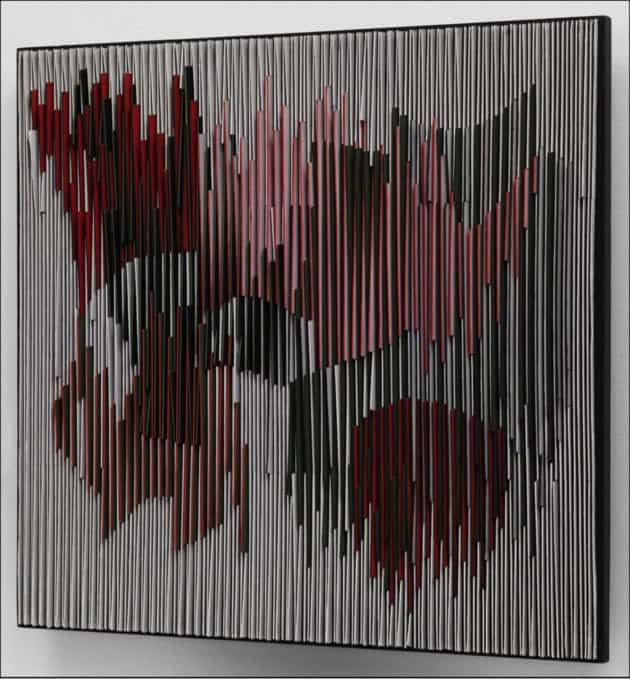
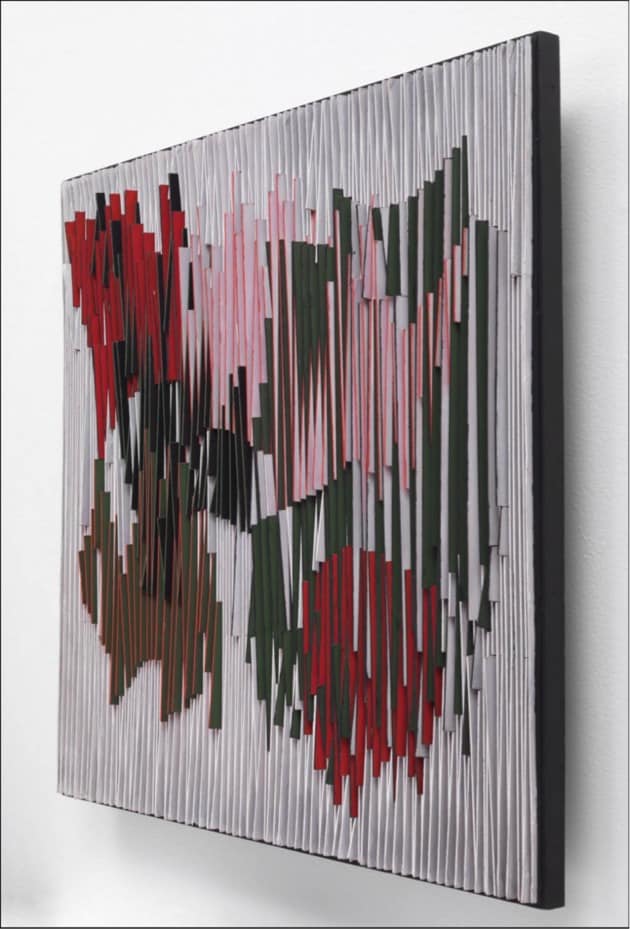
Cruz-Diez invented the term physichromie from the phrase “physical chromatism.”1Carlos Cruz Diez as quoted by Martha Sesín, “Amarillo aditivo [Additive Yellow], 1959; Physichromie No 21, 1960”, in The Geometry of Hope: Latin American Abstract Art from the Patricia Phelps de Cisneros Collection, ed. Gabriel Pérez-Barreiro (Austin: Blanton Museum of Art, University of Texas at Austin, 2007), 173. His goal was to create what he once described as a “chromatic event.”2Ibid. By this he meant a work whose colors and composition shift according to the viewer’s physical movement and the environmental light conditions. These four, visually very different views of Physichromie 21 were produced by moving the camera from right to left. They make clear its dependence on active viewer participation and contingencies of lighting. The overall impression is of four different compositions, highlighting the extraordinary perceptual instability of this structurally static work.
In 1965, MoMA’s founding director, Alfred H. Barr Jr., purchased Physichromie 114, the first work by Cruz-Diez to enter the collection. Physichromie 114 was completed in 1964, just one year prior to its acquisition, evidence of the Museum’s early commitment to acquiring contemporary abstract Latin American art. Physichromie 114 is very different in composition and materials from Physichromie 21, which provides a spectacular, historically important complement to the later work and serves to chronologically anchor Cruz-Diez’s important Physichromie series within the Museum’s collection. Considered together, the two foreshadow the many inventive variations of his Physichromies that Cruz-Diez would undertake in the ensuing decades.
- 1Carlos Cruz Diez as quoted by Martha Sesín, “Amarillo aditivo [Additive Yellow], 1959; Physichromie No 21, 1960”, in The Geometry of Hope: Latin American Abstract Art from the Patricia Phelps de Cisneros Collection, ed. Gabriel Pérez-Barreiro (Austin: Blanton Museum of Art, University of Texas at Austin, 2007), 173.
- 2Ibid.
